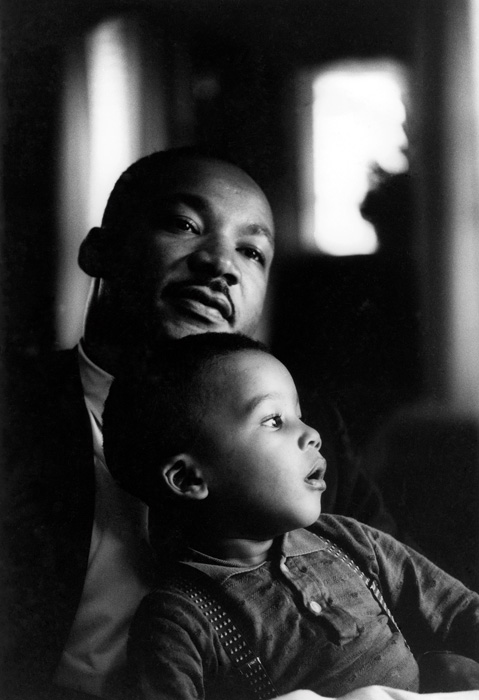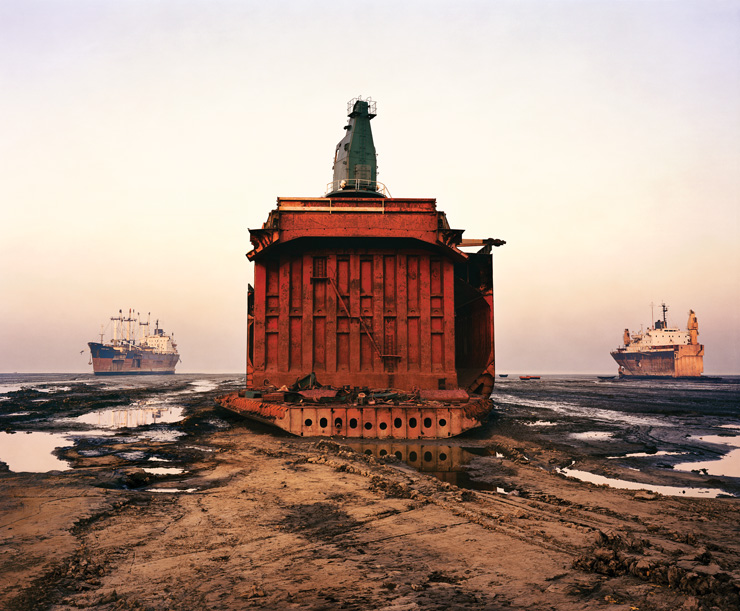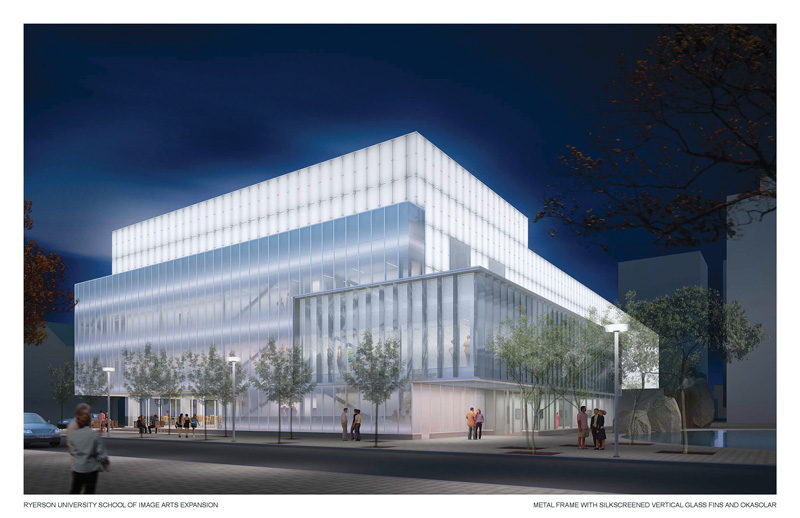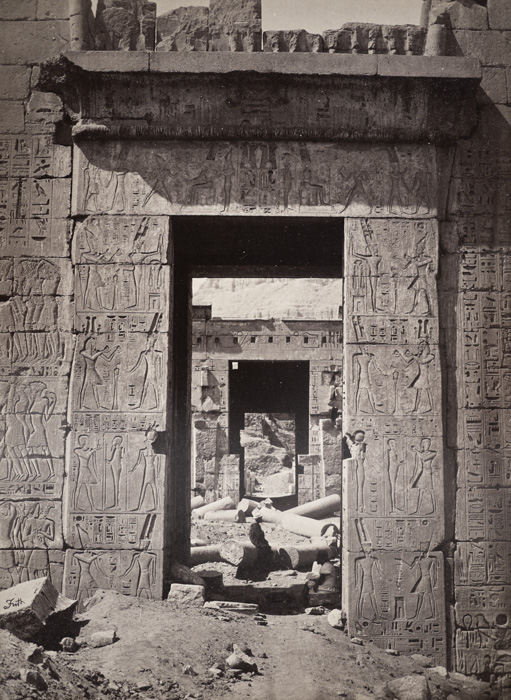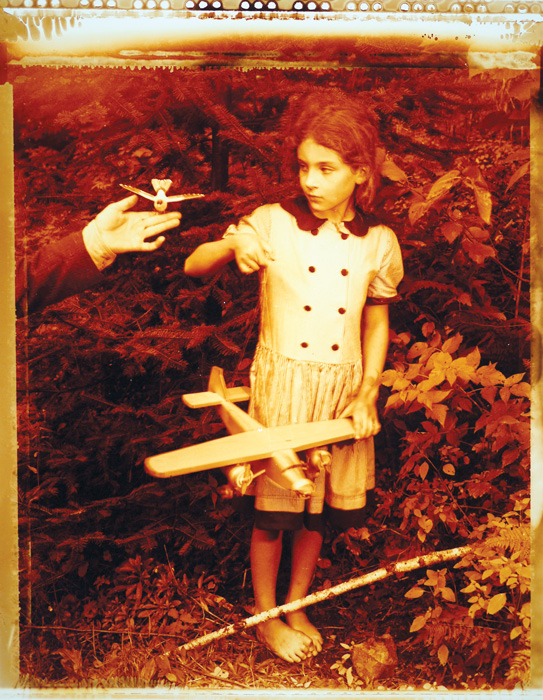[Spring/Summer 2011]
For the last few years, the campus of Ryerson University in downtown Toronto has been abuzz with the redesign and expansion of the School of Image Arts to accommodate the emerging Ryerson Gallery and Research Centre. Slated to open in fall 2012, this major facility is intended to become an international centre dedicated to photography and related media. To learn more about this ambitious project and the evolving vision guiding it, Ciel variable met with Doina Popescu, who is overseeing the endeavour as its initial director.
by Claude Baillargeon
Claude Baillargeon: The desire to make the Ryerson Gallery and Research Centre at Ryerson University a world-class destination for the collecting, study, teaching, and exhibition of photography and related media has been evolving for many years. What were the main factors that gave the current project its impetus?
Doina Popescu: The central factor is the gifting of the Black Star Collection of approximately 292,000 black-and-white photojournalistic prints to Ryerson University in 2005 by an anonymous donor.1 This largest single donation of cultural property ever made to a Canadian university came with a sizeable monetary gift, allowing the university to entertain the building of a gallery facility. The gifting of the Black Star Collection fell on fertile ground. Prior to this pivotal donation, an important study collection of original photographic works representing the history of photography from the nineteenth century to the present had been professionally developed and integrated into the teaching program of Ryerson University’s School of Image Arts?
The coming of the Black Star Collection marked an expansion of what was already in place. Our collection suddenly gained a substantially enlarged focus to include the history of photojournalism. This development provided the foundation for the creation of the new Ryerson Gallery and Research Centre.
CB: The rendering of the redesigned School of Image Arts that has been used for some time to publicize the Ryerson Gallery and Research Centre suggests a concerted effort to create a significant architectural statement. What impact is it intended to have upon the expanding Ryerson campus?
DP: When discussing his master plan for the university, its president, Sheldon Levy, often speaks of Ryerson University as a “city builder.” The university occupies an urban campus in the heart of downtown Toronto. The Ryerson Gallery and Research Centre is, in turn, situated in the core of the campus, which has become an integral part of downtown development.
Ryerson University is currently engaged in three enormously exciting building projects: the newly designed Image Arts Building, which houses the Ryerson Gallery and Research Centre; the restructuring of iconic Maple Leaf Gardens to include a new university sports centre; and the construction of a brand-new Student Learning Centre. The selection of world-renowned Diamond + Schmitt Architects to develop the new Image Arts Building and the Ryerson Gallery and Research Centre exemplifies Ryerson’s commitment to putting itself on the map in significant ways, including architecturally.
CB: Can you give us a sense of the facilities that will comprise the Ryerson Gallery and Research Centre?
DP: The Ryerson Gallery and Research Centre will occupy about half of the first two floors of the new School of Image Arts building. It is composed of approximately five thousand square feet of exhibition space with three distinct galleries, a sizeable and professionally staffed research centre, and the vault housing the collection. Most of the space will be climate-controlled in accordance with strict museum standards, allowing us to work freely with our own collections and to bring in major exhibitions from around the world.The main entrance will be through a glassed-in colonnade off Gould Street, which is slated to become a landscaped pedestrian zone. The colonnade will include a media wall with high-tech screens for moving images, visible from the exterior of the building. Beyond the colonnade will be the Great Hall with hd projection and other facilities to accommodate public events such as receptions, screenings, and lectures. Off the Great Hall, visitors will gain access to the Student Gallery and University Gallery on one side and the Main Gallery on the other. The offices, the research centre, and the collection will be located on the second floor.
CB: How does the Ryerson Gallery and Research Centre intend to differentiate itself from other institutions devoting considerable resources to the collecting and exhibition of photography, such as the Art Gallery of Ontario, the National Gallery of Canada, and the Canadian Centre for Architecture? Where do you see yourself in relation to the major players on the Canadian scene?
DP: Certainly we are set apart from the institutions you mention by virtue of our being part of an important Canadian university, which offers us a specific framework within which to develop our vision, structure, and programs. While we do see ourselves as a public gallery, open to and in dialogue with a broad general visitorship, we are also part of a teaching institution. This enables us to offer the university community important academic and artistic forums and workshops around curation, collecting, approaches to art history, and so on. Currently, for example, we are setting up discussion forums linked to the role of new media in our gallery with media artist David Rokeby, who is Canada Council Artist in Residence at the Ryerson Gallery and Research Centre and the New Media Program of the School of Image Arts. We are also planning student workshops with Aboriginal curator Steve Loft, National Visiting Trudeau Fellow at Ryerson University. In both cases, their work with us will culminate in an exhibition project relating to our collections.
I certainly do not wish to attempt to define the collecting or exhibition mandates of the prestigious and seasoned institutions that you have mentioned, but I can say that I see us in a complementary relationship with them. We are currently in dialogue with our colleagues at the Art Gallery of Ontario, the Royal Ontario Museum, the National Gallery, the Corcoran Gallery of Art in Washington D.C., the Jeu de Paume, and the Centre Georges Pompidou in Paris, to name but a few. We are developing partnerships with some of these institutions and are exploring how we might jointly develop and share exhibitions, public programming, and individual expertise.
Of course, the single greatest factor that differentiates us from all other arts institutions is that we have been gifted the historically significant Black Star Collection of photojournalistic prints originating from the New York–based press agency of the same name. Black Star photographers played a major role in capturing the images that helped to define the twentieth century. The collection is an eyewitness to history, and a number of the photographs, first published in Life magazine and other publications, such as Look, The Saturday Evening Post, and The New York Times, are instantly recognizable. Many of the thousands of photographers represented in the collection – for example, Robert Capa, Andreas Feininger, Germaine Krull, Martin Munkacsi, W. Eugene Smith, and Mario Giacomelli – are established figures in the history of photography. Their influence shaped photographic practice in the twentieth century. The type of research that Ryerson University is currently embarking on – by that I mean research into the workings of a major photographic press agency – is relatively new and just coming into its own. Although I can’t go into greater detail during a short interview like this, you can begin to see how this collection will offer us opportunities for new scholarship and curatorial perspectives leading to exciting exhibition projects.
CB: My understanding is that the Black Star Collection is composed mostly of prints and that it came to Ryerson without contact sheets, negatives, research files, cataloguing cards, or copyrights for the images in your possession. Since this is the type of material that attracts scholars to archival repositories around the world, how do you hope to foster its value and relevance as a major research collection, and what are some of your strategies to explore and bring out its curatorial potential given these limitations?
DP: That is a key question, indeed. We have the prints of the Black Star Collection carefully catalogued and stored exactly as they were in the agency, with important information on the versos, including some additional materials from the hanging files in which the photos were originally housed. We are making good progress in digitizing the material and entering contextualizing information into the database. While it is true that we are missing some of the materials you mention, this is causing us to be innovative in our research methodology, which is yielding interesting results. Further questions and answers are being revealed through the work being done by international scholars and curators whom we have brought in to engage with the collection and through photojournalistic work-shops that we have been conducting with students from Ryerson’s graduate program in photographic preservation and collections management. For example, we conducted a summer workshop in 2010 that analyzed every placement of a Black Star photograph in the entire history of Life magazine. This has created a foundation upon which subsequent research can build. We are also engaged in an ongoing oral history project, interviewing Black Star photographers on film. In February, we invited two major civil rights movement photographers, Bob Fitch and Matt Herron, who worked for Black Star, to share with us their experiences in the field, their relationships with the agency, and insights into the workings of their photographic practices. These interviews will join a growing repository of conversations with key Black Star photographers, creating invaluable primary research material that will be of great interest to scholars, curators, and students. Eyewitness accounts of this sort also allow us to create filmed material that will deepen the viewing experience of related exhibitions.
There are two interesting tasks that we are currently following. On the one hand, we are working on a conceptual, contemporary basis, inviting major artists, writers, and curators to make diagonal cuts into the archive. On the other hand, we are facilitating photographic historical research that produces new scholarly materials, making remarkable discoveries along the way. Our multi-step research plan will take us ever deeper into the historical layers of this broad-reaching collection. I have no doubt that the Ryerson Gallery and Research Centre will be producing internationally significant research in the field of photojournalism and that these results will be shared through publication, exhibition, and public programming.
CB: Your intention to expand the holdings of the Ryerson Collection from its current three hundred thousand images to one million over the next five to ten years seems especially ambitious. Isn’t there a danger of becoming an unwieldy repository without sufficient staff and resources to handle the scale of such an archive?
DP: Absolutely, we are aware of that. We have created an acquisitions committee of experts and developed a policy designed to move proposed acquisitions forward in a professional manner. We are carefully examining what would complement the Black Star Collection and the fine art collection, respectively. For example, we are currently working on acquiring a few comprehensive and memorial artist archives. Speaking of memorial archives, we recently acquired the entire collection of negatives, contact sheets, photographs, and contextualizing materials, including letters, newspaper articles, press passes, and war medals, for an important and prolific Black Star photographer named Werner Wolff. Wolff fled Nazi Germany for New York in the 1930s; after working as a photographer for the U.S. forces during the Second World War, he returned to work for Black Star for most of his long career. These comprehensive additions to our collection, and others that will most certainly surface, complement our holdings in important ways and further raise the international profile of our archive. Everything that we acquire must suit our current context and mandate. That said, it is not possible to determine for certain the rate at which we will be expanding the collection. It is, of course, not about acquiring a set number of images, but about having the possibility of expanding as needed.
CB: Would there be a Canadian focus on this aspect of collection building or do you envision something broader?
DP: We have a strong commitment to both historical and contemporary Canadian photography; however, the Canadian material will find its well-reasoned and celebrated place within the broad context of the collection.
CB: It seems to me that what is unique about the Ryerson Gallery and Research Centre is its integration within the educational programs of the School of Image Arts. Could you expand upon the mutual benefits of this relationship and describe how your vision for the Gallery and Research Centre dovetails with the academic programs of the School of Image Arts?
DP: The program of student engagement and integration is very important to our vision. We plan to involve students in multiple ways, through course work, specific exhibition opportunities in the Student Gallery, or as research interns, docents, and volunteers. The Ryerson Gallery and Research Centre will be an active forum for both curricular and extracurricular development and sharing. We would like to become a hub of dialogue within the School of Image Arts and for the entire university. Given the nature of our collection, the themes will be wide-ranging. For example, as the Black Star Collection covers the history of the twentieth century from a photojournalistic perspective, it will attract students from multiple disciplines across the university, including history, political science, and journalism. The Ryerson Gallery and Research Centre will be open to everyone across campus, while also addressing the broader arts communities and the general public in Toronto and beyond.
CB: Contemplating the way forward, what goals have you set for the first few years of activity surrounding the Research Centre?
DP: Ryerson University is seriously committed to scholarly research and creative activity. Hence, our goals are very much in keeping with standards of international scholarship. The main thrust of our research program will initially focus on our becoming a centre of excellence around the history of photography and photojournalism in general and the Black Star Collection in particular. We hope to create a research chair to oversee and further develop this scholarship. At this time, Ryerson University has become a publication partner with the Paris-based, newly bilingual, international journal for the history of photography, Études photographiques.
I would like to see the Ryerson Gallery and Research Centre become a national and international centre of vibrant activity around our three main areas of focus: the collection, the research centre, and, very importantly, our exhibitions. The exhibition program, which will be made public early next year, will be the initial point of interaction with the diverse communities that we plan to welcome into our new facility starting in September 2012. If we can achieve some of these goals in the next five years, we will have been successful.
Claude Baillargeon, an alumnus of Ryerson University, is Associate Professor of Art and Art History at Oakland University, Rochester, Michigan. He received his MFA from The School of the Art Institute of Chicago and his PhD from the University of California, Santa Barbara.

